 |
 |
 |
 |
 |
 |
 |
 |
 |
 |
 |
 |
 |
 |
 |
 |
 |
|
 |
 |
 |
|
 |
 |
 |
|
 |
 |
 |
Grateful thanks to all those that have provided many of the articles, references and details in these pages
This is a non-profit site |
| |
| |
| |
| |
| |
| |
| |
|
 |
The site of the telescope at Wandsworth
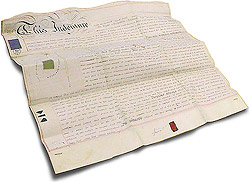 |
|
 |
 |
The actual indenture between Craig and the 4th Earl Spencer.
Courtesy Warwick Records Office |
|
 |
 |
|
After much investigation and through a network of friends, acquaintances and associations, the Rev. John Craig managed to secure a two acre plot of land on which to build his "monster" scope.
Virtually given to him by 4th Earl Spencer, the site would have provided clear uninterrupted views of the sky.
 |
|
|
The reason for the particular siting of the telescope on the Wandsworth Common is unknown, but certainly the industrial build up along the River Wandle, a nearby tributary of the Thames, would have made the building of the ‘scope much easier.
Wandsworth Common is part of a low lying gently rolling plain cut through by the Thames. Its maximum elevation is some 30 metres. To the west and south, elevations are similar, while 3 or 4 kilometers to the east the land gently rises to heights which exceed Wandsworth but by only about 10 metres.
According to geological records the whole area was covered by flint gravel, some 300,000 years ago.
|
 |
|
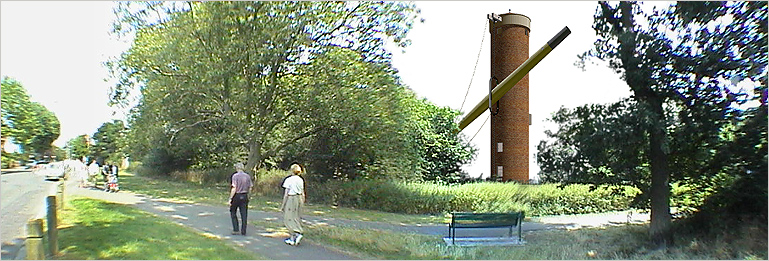
In the 1830s, purely for economic reasons, two railway companies - the London and South-Western and the London and Brighton, - were allowed to take their lines through the common, effectively cutting it up into three pieces. It was also about this time that parts of the common were given over to the erection of large public buildings such as a "house of correction" (now the Wandsworth Prison) and two asylums. So by the 1850s, the only buildings on the common were these.
Just north of Wandsworth, the Thames turns and runs north to Battersea before continuing its easterly flow towards the City of London and onward out into the North Sea. There is a small tributary of the Thames at Wandsworth called the River Wandle. It is only a short distance from where Craig proposed to site the ‘scope. During Craig's time there were many mills erected along its length. These mills were well suited for Craig's needs, from machining - to providing the refined metals for the fabrication of the telescope's tube.
back to top of page >>
There was also Frying Pan Brickworks which should have been an ideal source for the bricks, the very same as those used in the construction of the Wandsworth Prison a little further north of the Common. However, as we shall discuss later, during an archaeological dig on the site in June 2003, the bricks found were not the same as those being produced by that particular brickworks.
 |
 |
| |
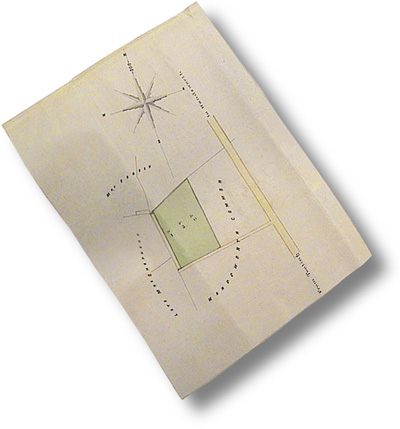 |
 |
 |
| |
 |
From the original Indenture between 4th Earl Spencer and John Craig, showing exactly the position and size of the observatory site. |
|
 |
 |
While the telescope did not occupy the highest point around London, its view would have been relatively good. Map elevation contours show that it would have been unchallenged for some distance. So, despite lacking direct evidence of Craig's siting motivation, it does appear that Wandsworth Common was a reasonable choice at that time.
The actual telescope site lies in the south west corner of Wandsworth Common on the east side of Trinity Road, its northern boundary being defined by the public footpath that runs just south of the gardens of the houses in Routh Road. While the western side stops on the grass verge pavement in Lyford Road.
Certainly, the lie of the land just here would have given Craig excellent uninterrupted views of the sky.
London lay to the north-east, while the small town of Wimbledon was a short distance to the south. The docks of "Wandsworth", just a mile or two north, would have facilitated the transportation of any prefabricated telescope parts. London Town had ample rail links to many of England's large industrial towns.
Although the location of the site has been known for some time, the actual position of the telescope tower within the site had been a subject of speculation for many years. Very few documents exist revealing any positional information of the tower's whereabouts. Indeed the only map that has any mark that represents the central tower is on the Stanford Map of 1862.
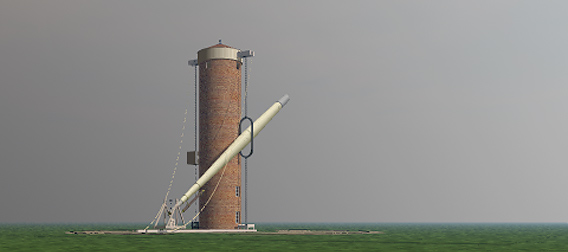 |
 |
Unobscured views of the heavens from the Wandsworth Common.
courtesy Greg Smye-Rumsby
 |
Craig must have had a strong urge to build the telescope in London as opposed to Leamington Spa.
back to top of page >>
|
 |
 |
Looking north with Lyford Road to the left we see through a clearing in the trees an impression of the telescope had it remained on the common today.
Courtesy © Greg Smye-Rumsby
|
 |
|
We know he traveled a great deal and was well accustomed to making long journeys. We also know he had connections in London and would have visited on a number of occasions. Since we also know that he had possibly known of William Gravatt from Leamington Spa, he may have also had connections with friends and acquaintances in Wandsworth. And so it might have been that after some enquiries, he approached Mr William Wilson, founder of Price's Candle factory, a lessee and resident of the Wandsworth Common; who went on to communicate Craig's interest in the area to the 4th Earl Spencer's manager, Mr Henry Goodford.
Earl Spencer was Lord of the Manor to the land around Putney, Wandsworth and Wimbledon.
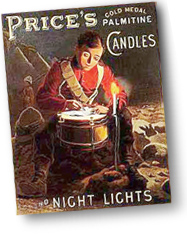 In a letter dated 10th February 1852 from Mr Wilson to Lord Spencer's advisor, Mr Goodford, it describes what may have been an extremely strange conversation between Wilson and Craig, stating that, "I had a visit this morning from Mr Craig vicar of Leamington to request the assistance of the Lessees of the Common in procuring for him the grant of a small portion [say about an acre] of the Common for the erection of a telescope of great power. In a letter dated 10th February 1852 from Mr Wilson to Lord Spencer's advisor, Mr Goodford, it describes what may have been an extremely strange conversation between Wilson and Craig, stating that, "I had a visit this morning from Mr Craig vicar of Leamington to request the assistance of the Lessees of the Common in procuring for him the grant of a small portion [say about an acre] of the Common for the erection of a telescope of great power.
I have assured him that he may depend on receiving every facility to further his views, from the Lessees to have given all the instruction in my power now to proceed."
Clearly, Craig had now established a connection with the managers of the estate and had even secured some kind of obligation for the plot's future.
 |
 |
 |
 |
 |
 |
| |
John Craig has been
with me about the plot of ground for his "monster telescope" |
 |
 |
 |
 |
 |
 |
In a letter from a Mr Charles Lee, a solicitor and advisor to Goodford on 26th February 1852, Craig had stipulated the urgency of his request and what should happen might the telescope need to be removed. It is also clear that Craig had given Lee some kind of urgent timeframe that simply had to met, "The Rev'd John Craig has been with me about the plot of ground for his "monster telescope". I hardly know what to do, he requires it within a week or his telescope will not be up in time to catch Mr Orion, who is now above the horizon, and it is a great object with the scientific gentleman to put a little salt on his tail before he departs. How can we manage to oblige this gentleman, (I presume that it is Earl Spencer's wish that it should be done) can we call it temporary occupation - for Mr Craig will stipulate to restore the land to Lord Spencer when the telescope is removed."
On the reverse of one of pages of the letter was a drawing by Lee of Craig's "monster" ‘scope. It might suggest, as we will later discuss, that the final design of the telescope, may not have been decided. Although, it may simply be that Lee had not fully understood how the telescope was to have looked or functioned from the meeting he had had with Craig.
back to top of page >>
By this time Lord Spencer himself was becoming interested. In a bid to make sure everyone living in and around the Common would be happy with the proposal, he had to make sure certain rules regarding the telescope's management had to be met. In a communication to Craig, he states, "...All I can do therefore and what I propose to do, if you please to consider it sufficient for your objects, is to grant you, free of rent, a piece of Land sufficient for the erection and working of your telescope for a fixed Term of Years, not to exceed fourteen, at the end of which Term the land to revert to the estate.
If this mode of doing the business shall be suitable to you, you can communicate your wishes to Mr Goodford."
 |
 |
 |
 |
 |
 |
| |
The centre tower will
be built this week |
 |
 |
 |
 |
 |
 |
On hearing this, Craig made only one further request to modify the kind the offer to grant permission to build his ‘scope. Since he would have invested a great deal of time and money into the project he felt that a term of just fourteen years too short, especially as he was hoping to attract many astronomers to use his giant telescope. Any limit on its use may have put many scientists off. The request was duly granted; maybe because Craig had put forward such a strong case for its demolition should the telescope fall into disuse; it was agreed that he could keep his observatory on the site in perpetuity - for as long as it remained a working telescope! On hearing this, Craig writes an excited letter to Lord Spencer on 26th April 1852, conveying what it is he intends to undertake - immediately. He writes, "I duely received your letter conveying to me the (unreadable) past at the Homage, on the 22nd of March last. Immediately on its receipt I commenced most active operations - The centre tower will be built this week & all ready for the telescope by the 8th of the approaching month on Saturday week in fact. I shall be obliged therefore, if you will (unreadable) as to prepare the usual Deed & to furnish me with its costs."
|
 |
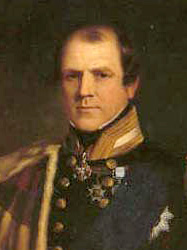 |
 |
Vice-Admiral Frederick Spencer, 4th Earl Spencer KG CB PC.
Courtesy © Wikipedia |
 |
|
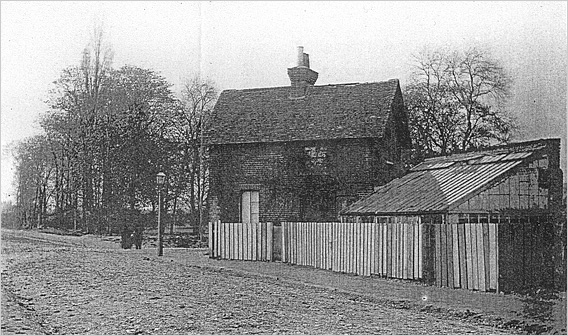 |
 |
An image taken of the Wandsworth Common near 'Lover's Lane' about the time of the Craig Telescope. It shows a house alongside which there appears a lean-to greenhouse. Images like these help pin down the exact location of the observatory and we get a much clearer idea of the surrounding local life.
courtesy Wandsworth Reference Library.
 |
Clearly, this very rapid action shows that Craig and Gravatt had already put in place all the necessary plans to get the telescope built. In the short time from the first inkling that approval might be granted, was only a matter of weeks. Many of the telescope's parts must therefore have already been commenced and were well on the way to completion. The lens alone, would easily have been two years in the making! So this news would have spurned on all involved. The note also shows that the tower would be ready for the tube by the 8th May 1852!
During the telescope's construction it must have drawn small crowds of local visitors to spectate, eager to see how the "monster" was getting on.
The probable order of build-up was, firstly, to clear the area, making it flat and level at the same time marking out the boundary. The natural flint gravel of the Wandsworth Common would have made an ideal surface to cover the whole site. It would have acted very much like "type 1" which is used in temporary car parks today. This would have been spread out and tamped down to a hard surface. The best astronomical skies can be found shortly after a storm when fine particles of dust have been "rained out" of the atmosphere making it very transparent. Unfortunately for Craig, unless the ground was well drained, it would have quickly become awash with sticky mud as the technicians helped to set up the telescope for operation.
back to top of page >>
In both the illustrations (the Beard Engraving and the Sargent Sketch) and the Bevington Photograph, there is shown a perimeter fence, this was almost certainly one of the first parts to be completed once permission was granted for use of the two acre site. From its appearance in both artworks, it was a simple affair of vertical lapped wooden slats nailed to wooden cross-members much in the manner of a modern garden fence.
The two workshop buildings at the north of the site were, more than likely, constructed at the same time as the tower the build-up, maybe to house some of the equipment employed for the construction. Later they would have been used to store the various parts of the ‘scope as they arrived on site to be installed in the final observatory. It would have been prudent to use one of the buildings as an operations room - a place where Gravatt could have laid out his flat plans and called morning meetings to see what needed to be undertaken next.
In 1852, Lyford Road was not built up and would have been narrow and poorly made, edged with rough ground on either side. However, it would have afforded easy access by horse-drawn cart to the highest part of the site - the north west corner.
Although in the 1850s the area was essentially flat, covered with small shrubs and rough grass, today there are many more trees and numerous footpaths.
 |
 |
 |
 |
 |
 |
| |
...for use of the resident observer or astronomer who may be placed in charge of the instrument |
 |
 |
 |
 |
 |
 |
Understanding the timeline of the erection of the various buildings is demonstrated in an article published in Mechanics Magazine in 1852, "It is intended to erect a small house within the enclosure for use of the resident observer or astronomer who may be placed in charge of the instrument itself not finally adjusted, no provision has been made to enable the public to inspect this last marvel of science, which we have no doubt will soon become one of the lions of the metropolis". From this we know that the accommodation block had yet to be constructed. It also seems that problems with the instrument were also being highlighted.
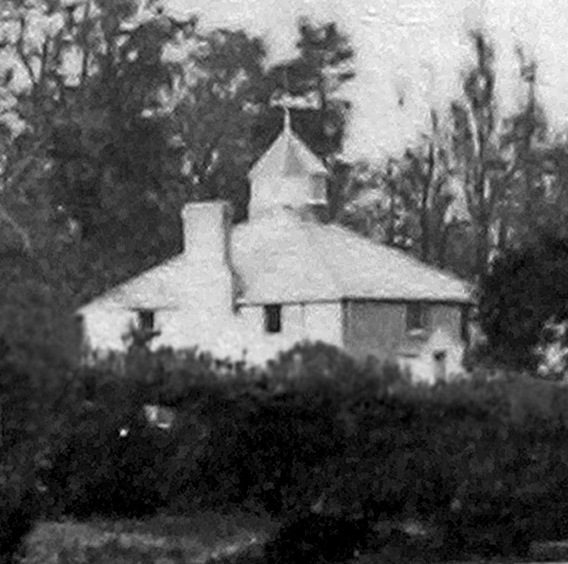 |
 |
In the Bevington photograph there is a small building clearly seen a little way from the Craig Telescope, this may be the astronomers' accommodation block. Above, the photograph has been doctored a little to remove the telescope's tube from the foreground.
 |
back to top of page >>
|
 |
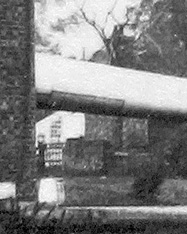 |
 |
In the background of the Bevington Photograph there appears a small house with what seems a lean-to greenhouse alongside. Note some of the glass windows are covered in whitewash. Also seen within the branches of the trees there appears what may be the roof and chimney stack of the building seen in the photograph on the left.
Courtesy © Greg Smye-Rumsby & Bridget Bishop |
 |
|
|


